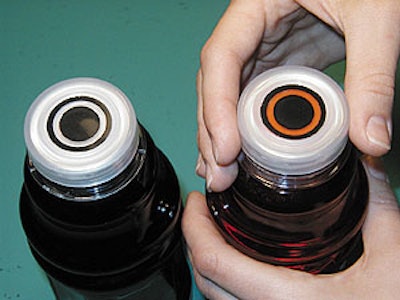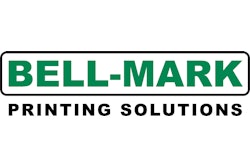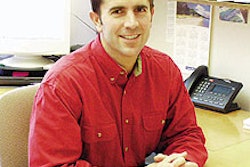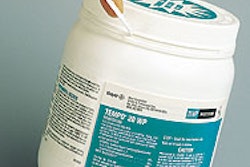
He wrote: “I was somewhat surprised when I received the November issue of Packaging World and read your editorial on packaging and terrorism. Up until that point I thought that I was the only one who recognized the frightening consequences if terrorists were to take aim at our packaged food. “Like you, my awareness stems from the fact that I also live in the Chicago area, and I worked in research and development for a packaging company when the Tylenol poisonings occurred. From that point on, I have worked to develop tamper indicating closures—first with National Can, then with White Cap, Crown Cork and Seal, and finally on my own—after leaving the packaging industry in 1997.” The next sentence was the one that routinely turns off the “attention” switch for most editors: “In 1999, as an independent inventor, I wrote and filed for a patent. . .” For those of us with a streak of cynicism, it sounds like the old “bait and switch.” It’s the commercial inside a glove of flattery. “Yes, I agree with what you’ve written. It was most interesting. Now here’s what I have to offer that has some relationship to it.” Each year, editors at most respected publications receive several of these letters, e-mails or even personal approaches, often at trade shows. Some of these people have interesting ideas, but many are wildly impractical. I recall, for example, a twin-chambered 2-L soft drink bottle that was designed to allow a consumer to drink one-half of the contents while the other half stayed fully carbonated until needed. In this most recent case, Heilman’s invention went much farther than most. He reports that his invention was issued a patent in January of last year. In his e-mail, Heilman said that he began to approach the packaging community when he filed his patent application in March ’99. According to Heilman, he contacted more than 50 individual companies that make closures or equipment, or that are prominent manufacturers of foods, beverages, and pharmaceuticals. Only one company, shortly after the patent application was filed, expressed any interest and that later fizzled, Heilman says. In fact, says Heilman, most companies didn’t even acknowledge receipt of the information regarding the closure. A couple of companies asked for more details, but there was no follow-up after additional information was sent. Then, after Sept. 11, Heilman recontacted many of these companies again, “assuming that they would realize the renewed importance of package security,” he wrote. Once again, the silence was deafening. Referring again to my column, he said: “Your comments about complacency certainly ring a bell.” Heilman is not naïve. He notes that he’s not surprised that “companies are hesitant to deal with an individual inventor.” Although he says that he’s trying to locate financing that would permit commercialization of the product, he admits the “odds are that this will not happen and my time and energy will have only been an exciting exercise. However, I have been in R&D long enough to realize that one new idea spurs the creation of other, better ideas, eventually producing a successful commercial product.” Since I’m neither an engineer nor a plastics fabrication expert, I can’t comment expertly on the value of Heilman’s patent. It may, like so many others, be impractical to produce or to use. Perhaps, unknown to Heilman, the companies he’s contacted have given it careful evaluation and found it wanting but never bothered to let him know. His main concern, he says, is “that this new closure concept is not lost because of complacency.” If anyone in our audience would like more details about Robert Heilman’s invention, he can be contacted at rjheilman@msn .com.





























